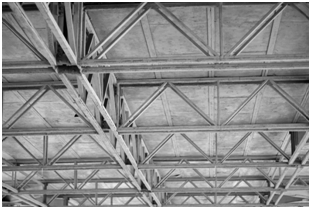Metal components are found all around us. Their strength, conductivity and malleable properties make them highly usable. However, they are subject to corrosion.

The cost of corrosion is significant. According to the World Corrosion Organisation, the annual worldwide cost of corrosion is US $2.2 trillion (more than 3% of the world’s GDP). 20-25% of these costs could be saved by using corrosion control methods. Costs are related to materials and repair work, the loss of function and loss of material. Prevention is better than cure.
Passive protection, in the form of coatings, provides a barrier between the metal being protected and the corrosion reagents and water.
Established Epoxies
The most common and long-standing coating technology is epoxy. They are often applied to the products in the factory and offer excellent resistance to impact, moisture and chemicals. Their metal bonding adhesive properties mean they are also often used as priming layers.
Strict environmental regulations surrounding the use of Volatile Organic Compounds have led to the development of 100% solid content epoxies.
The downside to epoxy coatings is their lack of flexibility and brittleness at low temperatures, which can both lead to cracking. Furthermore, they can become discoloured under UV exposure.
Polyurethane Protection
This has led to the development of polyurethane coatings, which, alongside the positive attributes of epoxies, also offer good flexibility and a high-gloss, high-pigment finish. They can be applied as a thin coat for weight saving, and they cure quickly, even at low temperatures, with the use of a catalyst.
Polyurea Developments
Moving on from polyurethane, these coatings cure more rapidly and without a catalyst in more challenging conditions. As thicker layers can be built up, they also offer some structural attributes. Polyureas should not be used for thin coat applications.
The coatings must be mixed exactly and special equipment and training is required.
The Best of Both
To achieve the preferential properties of polyurea but the ease of application and finish of polyurethane, hybrids of the two technologies have been developed by companies such as http://www.ct1ltd.com/.
This reduces the cost compared with polyurea but offers higher performance when the application environment is not so challenging.
Which Way to Go?
Selection of the most appropriate coating will be dependent on several factors: the finish required, time constraints for curing, application environment, desired properties and budget.



